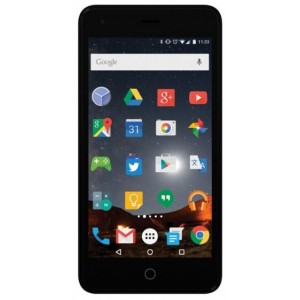Flash firmware on MaxCom MS514 Smart
Mobiles >> MaxCom >> MaxCom MS514 Smart| Specifications | Reviews | Secret codes |
| Unlock phone | Root phone |
| Backup | Flash Firmware | Screenshot |
How to flash MaxCom MS514 Smart?
Why reinstall the firmware?
Errors begin to appear in the Android operating system.
Some applications do not open, reinstalling which does not lead to a positive result.
Some applications from the Play Market do not start.
The phone turns off for no apparent reason.
The phone is slow.
You are not satisfied with the functionality of the stock firmware.
Where can I find the firmware?
On the website of your phone manufacturer.
On certain sites where developers post custom or official OS.
What should be done before installing the firmware?
Back up your contacts and user data and transfer it to your computer.
Insert an SD card into your phone to write the firmware to it.
Find out the exact model of your smartphone.
Fully charge your device.
Find and download the archive with Firmware. And place it on the SD card.
Installing TWRP Recovery
Install the Official TWRP App via the Play Market. And run this application.
When you start the application for the first time, you must consent to future manipulations, as well as consent to granting the application Superuser rights. Check the checkboxes and press the 'OK' button.
On the next screen, you need to select the 'TWRP FLASH' item and give the application root-rights.

On the main screen of the application, the 'Select Device' drop-down list is available, in which you need to find and select the device model for installing the recovery.
After selecting a phone, the application will direct the user to a web page to download the modified recovery environment image file. Download the proposed *.img file.
After downloading the image file, return to the main screen of the Official TWRP App and press the 'Select a file to flash' button. Then we tell the program the path where the file loaded in the previous step is located.
Now press the 'FLASH TO RECOVERY' button and confirm your choice, press 'OK'.
After the burn process is complete, the message 'Flash Completed Succsessfuly!' appears. Click 'OK'. The TWRP installation procedure can be considered complete..
Transfer the necessary files to the SD card. Using a PC or laptop card reader.
Insert a memory card into the device.
To reboot in recovery, it is convenient to use a special item in the Official TWRP App menu, accessible by pressing the button with three stripes in the upper left corner of the main screen of the application. We open the menu, select the 'Reboot' item, and then tap on the 'REBOOT RECOVERY' button. The phone will reboot into the recovery environment automatically.
Firmware via TWRP

Before flashing, you need to clear the 'Cache' and 'Data' sections, press 'WIPE' on the main screen. You will delete all user data from the phone, this will avoid software errors and other problems.
Everything is ready to start flashing. Press the 'Install' button.

The file selection screen is displayed. At the very top is the 'Storage' button, which allows you to switch between types of memory.
Select the location where you copied the files. Press the OK button.

Select the firmware file and click on it. A screen opens with a warning about possible negative consequences, you need to check the item 'Zip signature verification', which will avoid using damaged files during recording.
The procedure for writing files to the phone's memory will begin, this is accompanied by the appearance of inscriptions in the log field and the movement of the progress bar.
The completion of the installation procedure is indicated by the inscription 'Successful'.
Summary: OS version: Android 6.0; CPU: MediaTek MT6737, 1250 MHz; Processor cores number: 4; RAM: 1 GB; Built-in memory: 8 GB; Video processor: Mali-T720 MP2; Memory card slot: yes, volume of up to 32 GB, separate; Multi SIM mode: alternate; SIM-card amount: 2; Case type: classic; Height: 145 mm; Width: 72 mm; Thickness: 8 mm; Weight: 124 grams; Diagonal: 5"; Screen type: colored IPS, sensor; Sensor screen type: multitouch, capacitive; Screen size: 1280x720; Number of pixels per inch (PPI): 294; Aspect Ratio: 16:9; Rear camera: 8 MP; Flash: rear, LED; Rear camera functions: autofocus; Front camera: 2 megapixels; Video Recording: yes; Standard: GSM 900/1800/1900, 3G, 4G LTE, LTE-A Cat. 4; Interfaces: ...
Comments, questions and answers on the flash firmware MaxCom MS514 Smart
Ask a question about MaxCom MS514 Smart




